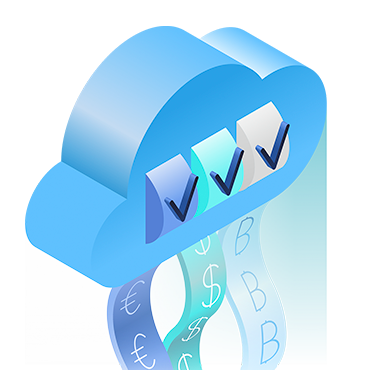What is Kubernetes?
Updated 29 Jun 2023
Kubernetes has emerged as the premier container orchestration platform, fundamentally transforming how developers build, deploy, and manage containerized applications. This comprehensive guide will delve into Kubernetes, discussing its definition, key benefits, comparison with Docker, various use cases, and related products and services.
Kubernetes defined
Kubernetes, commonly referred to as K8s, is an open-source container orchestration platform developed by Google. Its primary purpose is to automate the deployment, scaling, and management of containerized applications. Kubernetes organizes containers into logical groupings called “pods” and coordinates with a cluster of machines to ensure that applications run efficiently, even under heavy workloads and fluctuating demands.
The core of Kubernetes revolves around its declarative approach to application management. Developers define the desired state of their applications, and Kubernetes takes care of achieving and maintaining that state through its control loops. This approach enables a high level of automation, resilience, and scalability for containerized applications.
The architecture of Kubernetes
Kubernetes employs a master-slave architecture, which comprises the following components:
- Master: The master is the control plane of a Kubernetes cluster, responsible for managing the overall state of the cluster, maintaining the desired state of applications, and making decisions regarding scaling and updates. The master consists of various components, such as the API server, etcd, controller manager, and scheduler.
- Nodes: Nodes are worker machines that run containers. Each node runs a container runtime, such as Docker or containerd, and the Kubernetes node agent called the kubelet. The kube-proxy, another component running on each node, enables network communication between pods.
- Pods: Pods are the smallest deployable units in Kubernetes and represent a single instance of a running application. Each pod contains one or more containers that share the same network namespace, which allows them to communicate with each other and access shared storage volumes.
What are the benefits of Kubernetes?
Kubernetes offers several advantages, such as:
- Scalability: Kubernetes automatically scales applications based on load and demand, ensuring optimal resource utilization and reducing operational overhead. Both horizontal and vertical scaling are supported, catering to various application requirements.
- High availability: Kubernetes guarantees application availability by managing container distribution across a cluster, handling failures, and providing seamless updates. Its self-healing capabilities ensure that the desired state is always maintained.
- Portability: With support for multi-cloud and hybrid-cloud environments, Kubernetes enables the deployment of applications across different infrastructure providers, increasing flexibility and reducing vendor lock-in. Kubernetes provides a consistent environment and API for managing applications, regardless of the underlying infrastructure.
- Management: Kubernetes simplifies container management by offering a unified API and a comprehensive set of tools for managing containerized applications. It integrates with various CI/CD pipelines and monitoring tools, streamlining development and operations workflows.
- Security: Kubernetes provides access control, security policies, and secrets management, ensuring that applications and data are secure and compliant. Network segmentation, encryption, and authentication mechanisms further enhance the security posture of Kubernetes deployments.
Kubernetes vs. Docker
Docker is an open-source platform designed to create, package, and distribute applications as containers. Although both Kubernetes and Docker are related to containerization, they serve distinct functions. Docker focuses on building and running containers, while Kubernetes centers on orchestrating and managing containerized applications.
Kubernetes can work with Docker and other container runtimes, such as containerd and CRI-O, to manage the deployment, scaling, and maintenance of containerized applications within a cluster. Docker also provides its own orchestration solution called Docker Swarm, which offers a simpler alternative to Kubernetes, albeit with fewer features and less flexibility.
What is Kubernetes used for?
Kubernetes is primarily employed for deploying and managing containerized applications at scale. Some prevalent use cases include:
- Microservices: Kubernetes streamlines the management of microservices architectures, ensuring that individual services can be updated, scaled, and maintained independently without causing downtime or affecting other services. This enables faster development cycles and improved application resilience.
- Cloud-native applications: Kubernetes supports the development and deployment of cloud-native applications that can run across multiple cloud providers and on-premises environments, enabling organizations to leverage the best services and infrastructure for their needs. The Cloud Native Computing Foundation (CNCF), which hosts Kubernetes, provides a rich ecosystem of tools and best practices for building cloud-native applications.
- Big data and machine learning: Kubernetes facilitates the deployment and management of big data processing and machine learning workloads by handling resource allocation, scaling, and fault tolerance, allowing teams to focus on developing models and processing data. Kubernetes’ extensible architecture allows for the integration of specialized frameworks and accelerators, such as TensorFlow and Apache Spark.
- Legacy application modernization: Kubernetes can help modernize legacy applications by containerizing them and managing their deployment and scaling. This approach provides increased flexibility, portability, and resource efficiency while maintaining existing functionality.
Related products & services
There are several products and services that complement and extend the functionality of Kubernetes:
- Google Kubernetes Engine (GKE): GKE is a managed Kubernetes service offered by Google Cloud, which automates cluster management and simplifies deployment. GKE provides features such as auto-scaling, rolling updates, and private clusters, enabling organizations to efficiently run containerized applications.
- Amazon Elastic Kubernetes Service (EKS): EKS is a fully managed Kubernetes service provided by Amazon Web Services (AWS). It simplifies cluster setup and scaling, allowing developers to focus on building applications. EKS integrates seamlessly with other AWS services and supports features such as managed node groups and AWS Fargate for serverless container execution.
- Azure Kubernetes Service (AKS): AKS is a managed Kubernetes service from Microsoft Azure that offers serverless Kubernetes and integrated continuous integration and continuous delivery (CI/CD) capabilities. AKS simplifies cluster management and integrates with Azure services like Azure Monitor and Azure Active Directory for a comprehensive solution.
- OpenShift: A container platform by Red Hat that combines Kubernetes, Docker, and other technologies to provide an enterprise-ready solution for deploying containerized applications. OpenShift offers advanced features, such as integrated CI/CD, application templates, and multi-tenancy support, catering to the needs of large organizations.
- Rancher: Rancher is a complete container management platform that simplifies the deployment and management of Kubernetes clusters across various infrastructure providers. It offers a unified management interface, multi-cluster and multi-tenant support, and a built-in application catalog for deploying containerized applications.
- Helm: Helm is a package manager for Kubernetes that simplifies the deployment and management of applications on Kubernetes clusters. Helm uses “charts,” which are pre-configured Kubernetes resources, to deploy applications with a single command, streamlining application lifecycle management.
Conclusion
Kubernetes has revolutionized the way containerized applications are deployed and managed. By offering scalability, high availability, and simplified management, Kubernetes has become an indispensable tool for organizations looking to adopt modern application architectures. With the continued growth of cloud computing and the increasing adoption of containers, Kubernetes is poised to remain a crucial technology in the world of software development. Its vibrant ecosystem of related products and services further enhances its value proposition, making it the go-to solution for container orchestration.
At Ostride Labs, we harness the power of Kubernetes as a crucial component of our cloud application development services. This robust, open-source platform orchestrates our containerized applications, ensuring they run seamlessly and efficiently across diverse cloud environments. Kubernetes enables us to automate deployment, scaling and management of applications, enhancing our ability to deliver resilient and scalable solutions to our clients.



